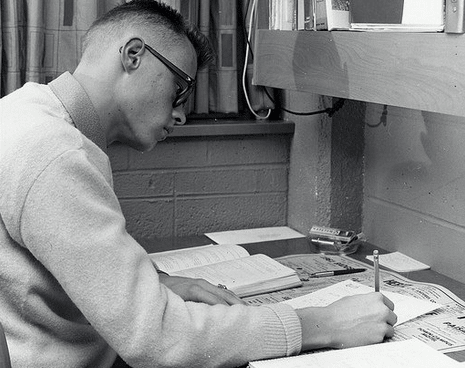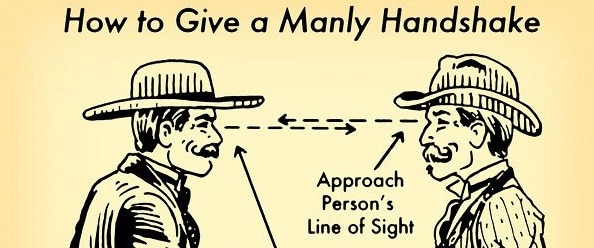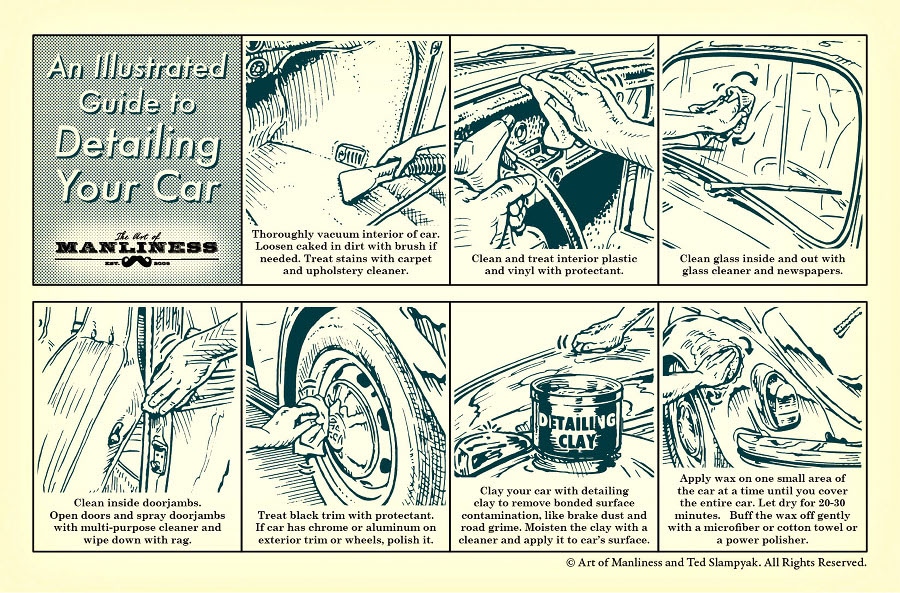
Earlier this week, we discussed the basics of student loans every young man should know before taking them on.
For many of you, it’s advice you may have wished you had gotten a decade ago before you started college. Now you’re stuck with a pile of student debt, and feel overwhelmed by the prospect of paying it all back.
If you’re in that boat, today we offer a guide to paying back your student loans, including tips for how to get rid of your debt faster and more effectively.
Types of Student Loan Repayment Plans
So you’ve graduated college. Congratulations! Here’s your diploma and student loan statement. When you’re just starting out at the bottom of the corporate ladder and not making much money, looking at a $30,000 bill (the average for student borrowers) can be really overwhelming.
Thankfully, the federal government has put in place several payment plans that can make paying your student loan bills a bit more manageable. Below we highlight them:
Standard Repayment Plan. Payments are a fixed amount of at least $50 per month for up to 10 years. The pro of this plan is that you’ll pay less interest over the long haul than you would with other plans.
Graduated Repayment Plan. Payments are lower at first and then increase every two years or so. You have ten years to pay off your loan with a graduated payment plan. This plan assumes that you’ll be making less money at the start of your career, so the payments are less. For the first few years, you’re just paying the monthly interest on your loan. While the smaller payments at the beginning of the payment term can help with the monthly budget, with this plan you will end up paying more in interest than you would with the standard plan.
Extended Repayment Plan. This is a payment plan for folks with over $30,000 in direct and FFEL loans. Instead of having ten years to pay back your loans, you have 25 years. The payments with the extended payment plan are smaller, but you’ll pay more in interest over time than you would with the 10-year standard plan.
Income-Based Repayment Plan. If you have a partial financial hardship, an income-based repayment plan is for you. Your maximum monthly payments will be 15% of your discretionary income, which is defined as the difference between your adjusted gross income and 150% of the poverty guideline for your family size. You’ll have 25 years to pay off the loan on this plan. If you’ve made qualifying monthly payments during the entire 25 years, but still don’t have your loans paid off, then the remainder of the debt will be forgiven. Keep in mind that you may have to pay income tax on the amount that was forgiven.
While the income-based repayment plan can make your monthly loan payments much more manageable, you will pay more, due to interest, than you would if you had gone with the standard plan.
Besides this income–based repayment plan, there are a few other ones you might consider. They work pretty much the same way as the plans just described but differ in eligibility and in your monthly payment amount. For more information visit StudentLoans.gov.
What Happens If I Can’t Make My Loan Payment?
The consequences of not paying your student loan bills are fairly dire. Unlike most credit, it’s extremely, extremely difficult to discharge or reduce your student loan debt by declaring bankruptcy. You’re stuck with it FOR…EV…ER. So there’s no escaping it. If you don’t make a payment on a federal student loan in 270 days, the federal government will consider the loan in default and will use its mighty power to make your life miserable until you start paying them again.
Here are just a few of the things that can happen if you don’t pay back your student loans:
Your credit score will suffer. A bad credit score will make buying a car, a home, or even renting an apartment difficult.
You’ll get deeper into debt. The interest on your loan keeps accruing, even if you’re not paying. If you think your student loan bill is bad now, just give it a year without making your monthly payment.
No more tax refund. If you have a federal student loan in default, the government will intercept your tax refund to pay down your student loan bill. What’s more, even your spouse’s portion of the refund can be used by the government to pay down your debt.
Wages may be garnished. If you default on a federal student loan, the government can garnish up to 15% of your disposable pay. Not only will you be missing part of your paycheck, but your employer will know that you’re in trouble with your loans.
Co-borrowers could be in trouble too. If mom and dad co-signed on your federal student loan, they’re on the hook for your defaulted loan. Expect them to be hearing from collection agencies too.
Bottom line: Always, always pay your student loan bill.
Loan Deferment and Forbearance
With some prudent financial planning, you shouldn’t have to worry about defaulting. And as discussed above, the federal government offers several graduated repayment plans that can make your monthly student loan bill much more manageable.
With that said, if you still can’t make your monthly payment even with one of the graduated repayment plans, you’ll need to look into loan deferment or forbearance.
Loan deferment. A loan deferment is a period in which the payment of your student loan bill is put on hold. For Direct Subsidized and Perkins Loans, the federal government will pay the interest on your loans during the deferment period.
The eligibility rules for loan deferment change every few years, but they’re generally granted to people who are unemployed, a professional intern or resident, a full-time unpaid volunteer, or the recipient of an approved graduate fellowship.
If you’re a full-time teacher in a “teacher poor area,” you may be eligible for a three-year loan deferment.
Loan forbearance. If you can’t make your payments, but don’t qualify for deferment, loan forbearance is another option to consider. Forbearance may allow you to stop making payments on your loan completely, or it may reduce your monthly payment.
There are two types of forbearance: discretionary and mandatory.
Discretionary forbearance is for folks who have some financial hardship or who are so ill they can’t work. It’s up to the lender if you qualify or not.
With mandatory forbearance, the lender is required to give you forbearance if you meet certain criteria such as working in a medical or dental internship or serving in the National Guard.
To request a loan forbearance, you’ll need to talk to your loan provider.
Tips For Repaying Your Student Loan Debt
If you’ve just graduated college and are looking for a plan to pay off your student loans as fast as possible, we offer the following suggestions:
Tally up all your loans. If you’ve taken out multiple student loans, it’s easy to lose track of how much you owe. Thankfully, the government has created a central database where you can find all your student loans. Just visit the National Student Loan Data System to retrieve the info.
For private loans, you’ll need to do more sleuthing on your own, though it shouldn’t be much of a problem because you’ll probably already be receiving bills from them even while you’re in school.
Consolidate your loans. Loan consolidation is when all your various loans are put together into one massive loan. If you have federal student loans that were issued before July 1, 2006, look into loan consolidation. Before July 1, 2006, federal loans didn’t have fixed interest rates, meaning the rates on these loans could increase with time. Loan consolidation will lock your interest into a fixed rate, and there’s a good chance it will be lower than the rates you’re paying now. There really isn’t a need to consolidate if your loans were issued post-2006, because their interest rates are likely going to be the same and that rate is typically pretty low. Though, if the feds raise the interest rate on those loans, then yeah, you might consider loan consolidation.
For information about loan consolidation visit the Federal Direct Loan Consolidation Program.
Pay off your private loans first. If you have any private loans, pay those off first. The interest rates are usually higher than federal loans so the sooner you can pay those down the less money you’ll have to fork over for the life of the loan. Another reason to pay off your private loans first is that the interest rates on them usually aren’t fixed and can increase. Consequently, you’ll end up paying more.
Don’t forget to deduct your interest payments. Save on your tax bill by deducting the interest you pay on student loans. The IRS allows you to deduct up to $2,500 a year. So, for example, if you pay $1,000 in interest and are in the 25% tax bracket, you’ll be able to shave off $250 from your tax bill. Sure, it’s not much, but every little bit helps.
Ideas to Pay Off Your Student Loans Faster
Loan Forgiveness Programs. There are a few programs that will cancel all or some of your student debt after a certain period in exchange for providing some national service. Here are a few of the programs available:
- Teacher Loan Forgiveness. Teachers that work in schools designated as “low income” can have their loans partially canceled after five years.
- Public Service Loan Forgiveness. If you’re employed in certain public service jobs (i.e. government or non-profit jobs) and have made at least 120 payments on your loan, the remaining balance will be forgiven.
- Volunteer Loan Forgiveness. If you join AmeriCorps or the PeaceCorps, you can receive a partial cancellation of your Perkins Loans (15% for each year of service). If you’re a doctor or nurse and agree to work for two years in areas that are remote (rural communities) or economically struggling, you can receive partial forgiveness of your federal loans.
- Military Enlistment Loan Repayment. Not technically a cancellation of your loan, but if you enlist in one of the military branches, you may be eligible to have up to $65,000 of your student loan debt paid off ($20,000 for reservists). The amount depends on the branch. For more information see here.
Be frugal. One of the easiest ways to increase money available for paying your student loans is simply spending less money on other stuff! For ideas on how you can win the war on your student debt, see our article filled with 80 tips on how to be a bigger penny pincher.
Earn more money. Obviously, the more money you make, the more money you can direct towards paying off your student loans. The two best ways to increase your income are to 1) ask your boss for a raise and 2) start a side hustle. Any extra money you earn each month goes right to paying off your debt.
Paying back your student loans is a lot less fun than it was to be a student. But once you get the monkey off your back, you’ll gain a bit more of the freedom and pep in your step you had as a young buck. And you can finally stop eating ramen for dinner.
Tags: College






